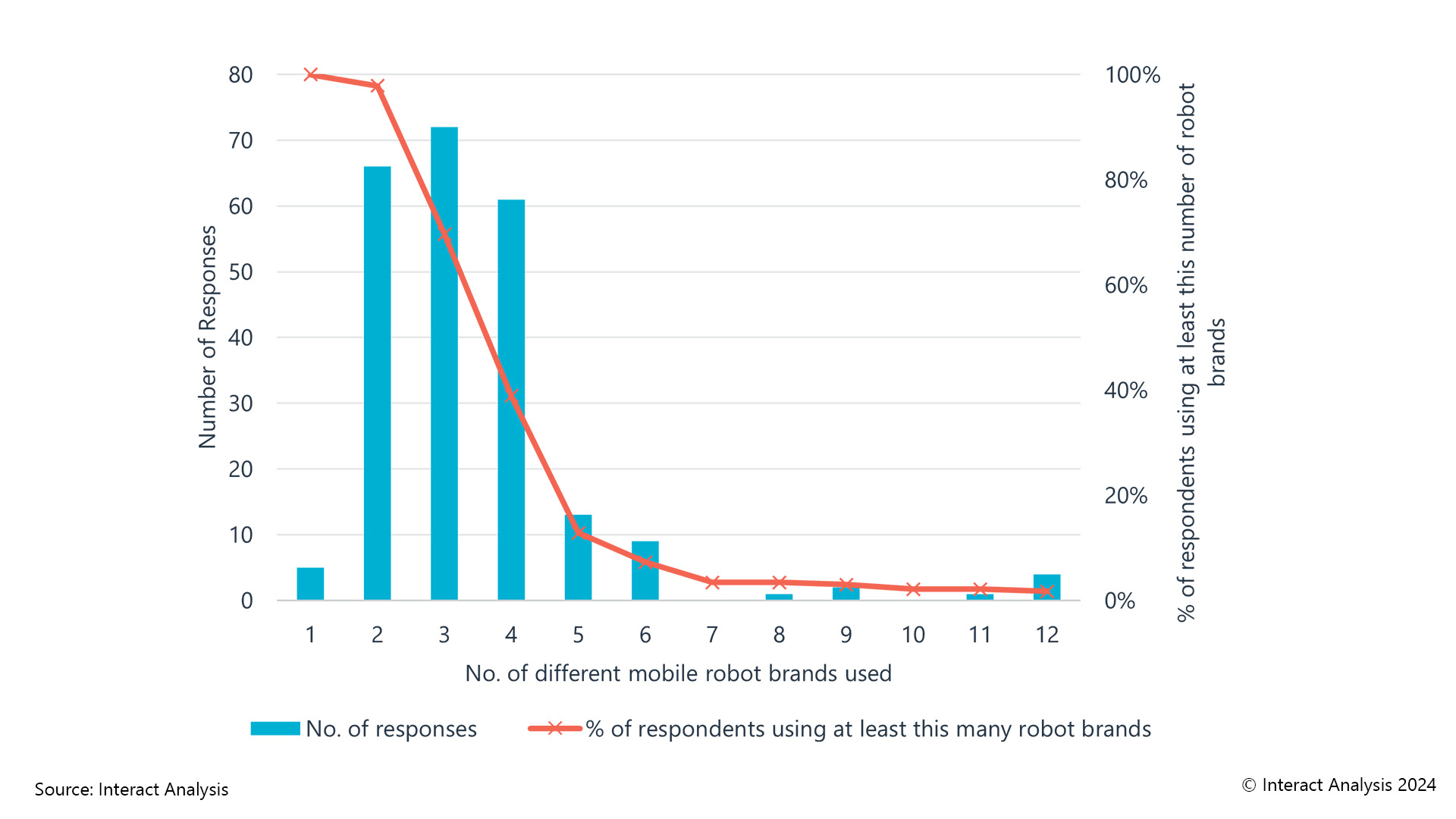What do customers expect from mobile robots?
A mobile robot survey by Interact Analysis covered the preferences, expectations, and challenges of end users worldwide.
The post What do customers expect from mobile robots? appeared first on The Robot Report.

Interact Analysis’ survey gave insights into what end users expect from autonomous mobile robots. | Source: Adobe Stock
Mobile robots have become an essential part of the automation landscape in recent years. For end users, they offer flexibility, scalability, and efficiency for various industries and applications. But what do customers actually want from mobile robots, and how do they evaluate and select different technologies and vendors?
Interact Analysis, a market research firm, revealed the results of its 2024 Mobile Robots Buyer Survey. The global survey covered the preferences, expectations, and challenges of end users of mobile automation. The company talked to 300 buyers and users of mobile robots, covering different company sizes, sectors, and regions.
With the survey, Interact Analysis hoped to shed light on the current and future adoption of mobile robots, the factors that influence purchasing decisions, and the pain points and benefits of using mobile automation.
Mobile robots are popular with larger manufacturers
The survey showed that mobile robot adoption is growing across different industries, but not at the same pace in each sector. Ninety-five percent of respondents said they already use some form of mobile automation in their facilities, such as automated forklifts, platforms, conveyors, and autonomous mobile robots (AMRs). This proportion, however, varied greatly by company size and sector.
Larger companies, with revenues over $1 billion, were more likely to use mobile robots than smaller ones. Manufacturers, especially those in the automotive, electrical, and semiconductor sectors, were also more likely to use mobile robots than retailers, third-party logistics (3PLs), or other industries.
Seventy-one percent of respondents said they only partially automated their workflows with mobile robots, indicating there is still room for improvement and expansion of mobile automation.
When it comes to emerging technologies, artificial intelligence was the most commonly mentioned emerging trend that customers were interested in, specifically when it came to mobile automation.
On the other hand, customers weren’t very familiar with the VDA 5050 standard for communication and interoperability. Only 20% of respondents said they were fully aware of it, and only 8% said it was or would soon be a mandatory requirement in their purchasing decision-making between mobile robots and fleet managers developed by the German Association of the Automotive Industry (VDA).
Customers more concerned with cost than loyalty, says Interact Analysis
Interact Analysis’ survey revealed that cost and integration difficulties are the main barriers and drivers of mobile robot adoption, and that these were two major factors for both technology and vendor selection. The most common reason for not using mobile robots was the high price or perceived lack of return on investment (ROI), followed by environmental factors such as floor suitability, space constraints, or climate.
Customers are not loyal to one mobile robot brand or type, according to the survey. Instead, they would rather use multiple brands and types for different workflows and facilities.
On average, respondents used 3.4 different mobile robot brands, and 123 different brands were mentioned in total, reflecting the fragmentation and diversity of the market.
ABB was the most mentioned brand, followed by OMRON, KUKA, and Locus Robotics. However, when survey takers were asked which brand they consider based in class, the answers varied by industry and applications Interact Analysis plans to share those results will be coming at a later date.
Customers did indicate they prefer to use the same mobile robot brands across different workflows in the same building, but not necessarily across different buildings or facilities in their network. This suggests customers care little about robot interoperability within a facility.
When selecting a vendor, the most important factors were the vendor’s track record, integration expertise, and local/on-site support, followed by the stability and size of the vendor. Price and product range were less important than the vendor’s reputation and service, the survey found.
Chinese vendors were not very popular among customers, with only 20% of respondents saying they had used or would consider using them in the future. The most common reasons for not considering Chinese vendors were security concerns, performance issues, safety issues, and legal reasons.

Major barriers to adopting mobile robots are lack of available budget and other competing priorities. | Source: Interact Analysis
What are customer mobile robot expectations?
The survey found the most common reason for needing to automate was the desire to reduce operating costs, followed by the need to improve reliability and accuracy. Surprisingly, a lack of labor was not one of the biggest reasons for automation.
When selecting technology for an automation project, the lowest lifetime cost and the ease/speed of integration were the most important factors, followed by system flexibility and performance.
When automating, customers expect a quick return on investment (ROI) and smooth implementation from mobile robots. Eighty percent of respondents expected an ROI within three years, with most of those expecting it between 18 months and three years. 3PLs typically expected a quicker ROI than other sectors.
Customers typically measure the success of robot implementation by a variety of different metrics. The most common metrics used to measure the success of mobile robot implementation were ROI, productivity, throughput, accuracy, and cost reduction.
Before making a final purchase, customers also expected to see the automation system in action, either through an in-house demo, a reference site visit, or a visit to the supplier’s demo center. During the purchasing and implementation process, the most common pain points were operation slowdowns, routing and tasking difficulties, and problems with integrating with internal software.
Once a robot was operational, the most common pain points were lack of maintenance prediction, costly downtime, and too much manual intervention required.
“The survey provides valuable insights for mobile robot suppliers and integrators who want to better understand and serve their customers,” stated Ash Sharma, chief commercial officer and vice president of research for robotics and warehouse automation at Interact Analysis.
The post What do customers expect from mobile robots? appeared first on The Robot Report.


